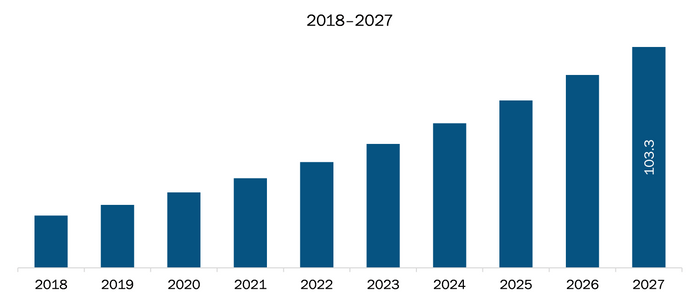The meter data management system market in Asia-Pacific is expected to grow from US$ 185.3 Mn in 2018 to US$ 603.5 Mn by the year 2027 at a CAGR of 15.9% during the forecast period.
The deployment of smart meters in emerging nations of the APAC region is gaining immense traction. The focus on conservation of energy is driving the deployment in these countries. The development of smart grids and burgeoning smart meter deployment across the region is anticipated to bolster the meter data management market. Also, China’s commitment to green development is another key driver for investments in the smart grid as well as AMI rollouts till 2020.
APAC countries, including China, Thailand, Singapore, and South Korea, are noticing increasing adoption of EVs, which is accelerating the number of EV charge stations. Such initiatives are expected to bolster the adoption of meter data management systems across the region.
Asia-Pacific meter data management system market is expected to grow at a good CAGR during the forecast period. . In 2019, Royal Dutch Shell launched EV chargers at petrol stations in Singapore. Also, the Malaysian government has taken initiatives for the development of EV charging stations across the country. It is anticipated that the country will have ~3,000 EV charging stations by the end of 2019. Further, the government of Thailand aims to have ~690 EV charging stations by 2036. Such initiatives are expected to bolster the adoption of meter data management systems across the region.
Rest of Asia-Pacific Meter Data Management System Market Revenue and Forecasts to 2027 (US$ Mn)

- This FREE sample will include data analysis, ranging from market trends to estimates and forecasts.
Asia-Pacific Meter Data Management System Market–Segmentation
Asia-Pacific Meter Data Management System Market By Offering
- Software
- Services
Asia-Pacific Meter Data Management System Market By Utility Type
- Gas
- Water
- Electricity
Asia-Pacific Meter Data Management System Market By Application
- Smart Grid
- Microgrid
- Energy Storage
- EV Charging
- Others
Asia-Pacific Meter Data Management System Market By End-User
- Residential
- Commercial
- Industrial
Asia-Pacific Meter Data Management System Market By Country
- Australia
- China
- India
- Japan
- South Korea
- Rest of Asia-Pacific
Asia-Pacific Meter Data Management System Market-Companies Mentioned
- ABB Ltd.
- Aclara Technologies LLC
- Diehl Metering GmbH
- Eaton Corporation
- Honeywell International, Inc
- Itron Inc
- Kamstrup A/S
- Landis+Gyr Group AG
- Schneider Electric SE
- Siemens AG
Asia Pacific Meter Data Management System Report Scope
| Report Attribute | Details |
|---|---|
| Market size in 2018 | US$ 185.3 Million |
| Market Size by 2027 | US$ 603.5 Million |
| CAGR (2019 - 2027) | 15.9% |
| Historical Data | 2016-2017 |
| Forecast period | 2019-2027 |
| Segments Covered |
By Offering
|
| Regions and Countries Covered |
Asia-Pacific
|
| Market leaders and key company profiles |
|
- Historical Analysis (2 Years), Base Year, Forecast (7 Years) with CAGR
- PEST and SWOT Analysis
- Market Size Value / Volume - Regional, Country
- Industry and Competitive Landscape
- Excel Dataset
Recent Reports
Testimonials
Reason to Buy
- Informed Decision-Making
- Understanding Market Dynamics
- Competitive Analysis
- Identifying Emerging Markets
- Customer Insights
- Market Forecasts
- Risk Mitigation
- Boosting Operational Efficiency
- Strategic Planning
- Investment Justification
- Tracking Industry Innovations
- Aligning with Regulatory Trends





















 Get Free Sample For
Get Free Sample For